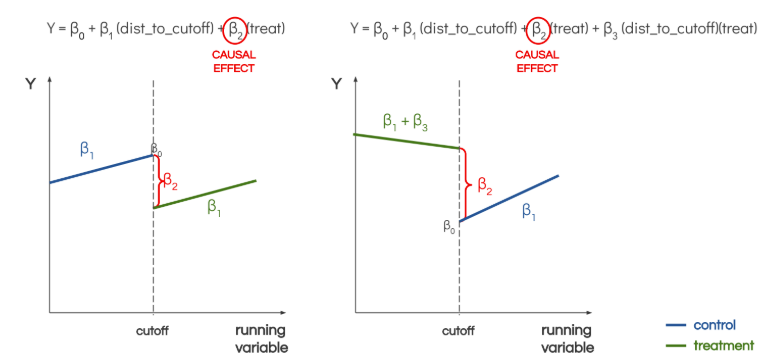Week 12: Quasi Experiments
1/3
Earn XP
Description and Tags
STAT 235
Name | Mastery | Learn | Test | Matching | Spaced |
|---|
No study sessions yet.
4 Terms
Natural (i.e., QUASI) Experiments
Sometimes doing an RCT is not feasible. Instead, we can try to find an RCT out in the wild by observing
two groups that have arisen naturally.
Recall that the most important aspect of an RCT is that the treatment is randomly assigned. However,
for natural/quasi experiments, it is not possible for the researcher to implement random
assignment . Rather, groups are selected in an “effectively random” way.
For this course, you are responsible for understanding and applying two quasi experimental designs:
1) Difference-in-Differences (DiD)
2) Regression Discontinuity Design (RDD)
Difference- in- Differences (DID)
What we can do instead is combine the within-unit difference with the across-group growth
difference (i.e., take a difference-in-differences )
● measure change in traffic accident rates in both states before and after policy implementation
Regression Discontinuity Design
(RDD)
KEY IDEA:
● A threshold/cutoff that creates two groups that are otherwise similar to each other on average.
● There is no material difference between observations right before/right after the cutoff, except for
the treatment itself.
● Thus, at the threshold, we essentially have a randomized experiment and can find the causal effect
by comparing the outcomes of the two groups.
EXAMPLE:
● Once a driver in Texas turns 79, he/she must have their driver’s license renewed by successfully
passing a vision test. This policy is intended to reduce the risk of car accidents/other incidents.
● Drivers right below the age of 79 are not fundamentally different from drivers right above the age of
79. The only difference between the two groups is the treatment itself (renewing DL).
● Thus, by comparing the number of traffic violations for drivers in these two groups, we can estimate
the causal effect of DL renewal on safety outcomes.
RDD Visual Representations
